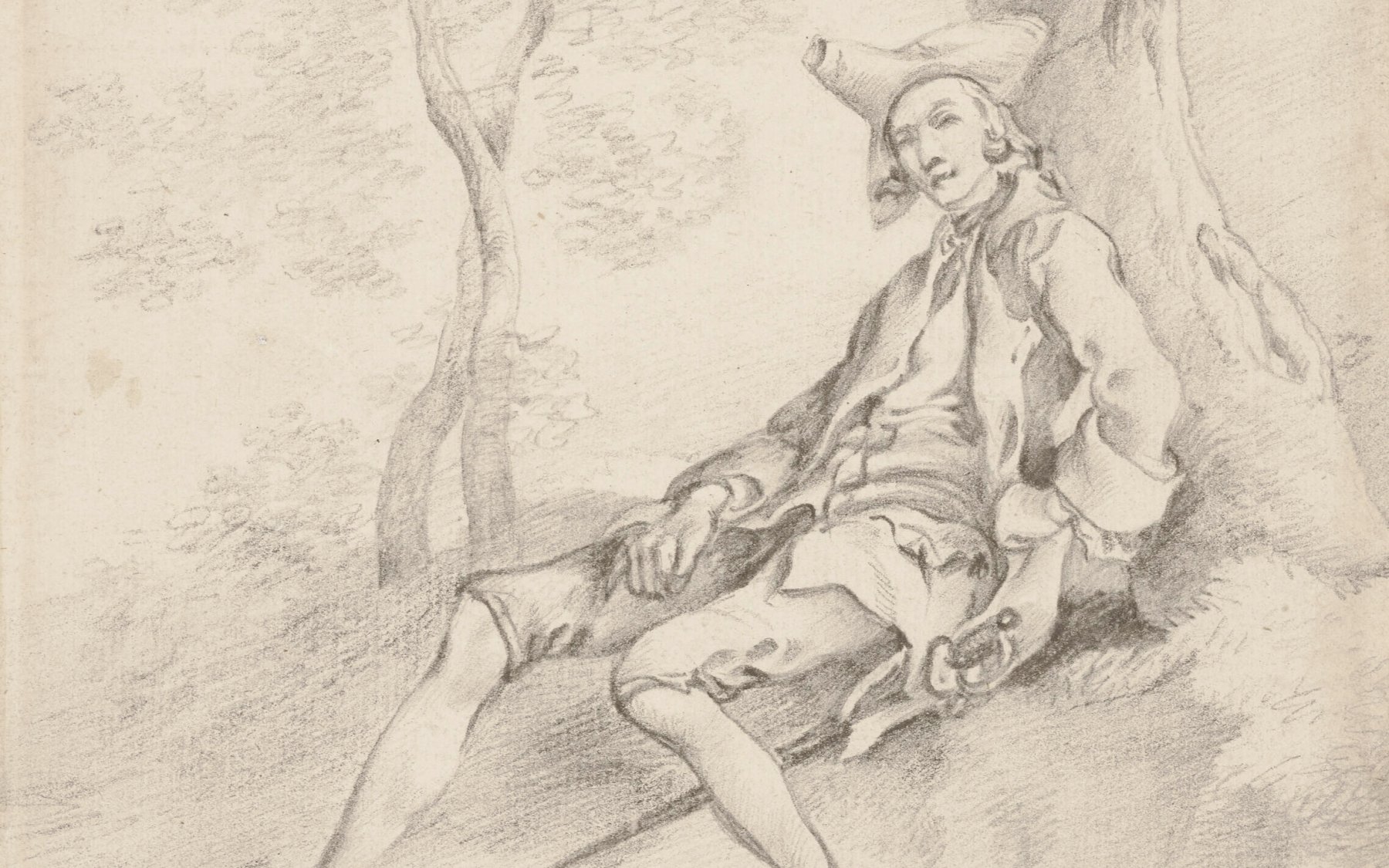The Old Master & British Drawings & Watercolours sale is led by a luminous late 1820s watercolour of Sunrise off Margate by J.M.W. Turner; a wonderfully atmospheric drawing not seen on the market for over 50 years.
The British section of the sale presents eighteenth-century and nineteenth-century drawings including
a powerful Thomas Gainsborough of A Young Man reclining on a Bank beneath a Tree, possibly a self-portrait, a remarkable early work by John Constable, and a charming group of George Romney drawings and sketchbooks, as well as several 18th Century pastels.
The Old Master Drawings section of the sale will present a curated selection of fine works on paper spanning the 16th to 19th century from the French, Italian and Dutch and Flemish Schools, represented by the most celebrated artists of these periods.
‘…This man Turner, he learnt a lot from me… ’ Mark Rothko (1903-70)
on seeing the 1966 retrospective of Turner’s paintings and watercolours at the Museum of Modern Art, New York
(Quoted in B. Venning, Turner. Art & Ideas, London and New York, 2003, p. 314)
London – Capturing the enigmatic fleeting beauty of changing sunlight celebrated across cultures and across time, Sunrise over the Sea, perhaps at Margate by Joseph Mallord William Turner, R.A. (1775-1851) is a quietly hypnotic highlight in the Old Master and British Drawings and Watercolours sale on 4 July, during Classic Week London (estimate: £600,000-800,000). It is offered from the collection of the late Walter Brandt, one of the most prolific and discerning collectors of British Watercolours in the latter half of the 20th Century and brother of the acclaimed photographer Bill Brandt. In exceptional condition, with interesting provenance – having been owned by Turner’s landlady in Margate, the twice-widowed Sophia Caroline Booth (1798-1875) – this watercolour provides a wonderful example of a late Turner watercolour, and an aesthetic link to the Modern British Art which began Walter Brandt’s collecting journey. It will be on public view at Christie’s New York from 10 to 14 June before being part of the Classic Week pre-sale exhibition in London, on view from 1 to 4 July.
Harriet Drummond, International Head of British Drawings and Watercolours, commented: “This remarkably well-preserved and ravishingly beautiful drawing is an exceptional example of the boldly expressive watercolours Turner made in his final years. Previously dated to the later 1820s, it is has now been associated by Ian Warrell for the first time with sheets of one of the ‘roll’ sketchbooks that were broken up and dispersed after Turner’s death. Turner deployed these light-weight books on many of his later travels in the early 1840s, notably in Germany, Venice and the celebrated final tours of Switzerland. In this instance, the dismantled book can be placed in the sequence of sketchbooks used during the summer of 1845, overlapping in its focus on cloudy skies over the sea with the contents of the ‘Channel’ sketchbook at the Yale Center for British Art, and several of those in the Turner Bequest at Tate Britain.”
J.M.W. TURNER: MARGATE AND NORTHERN FRANCE
Turner’s earliest connection with Margate can be traced back to the 1780s, when he was barely a teenager, but it was from the early 1830s that Turner revisited Margate while researching scenes for his Picturesque Views in England and Wales and became a regular visitor, discovering lodgings looking out across the sandy beach; his visits resulting in a mass of quick sketches, vivid colour studies, and experimental trials of ideas for oil paintings, making Margate rank with Rome, Farnley, Petworth, Venice or Lake Lucerne and the Rigi as one of the special places in his creative life. Over time Turner became increasingly close to his landlady, the twice-widowed Sophia Caroline Booth (1798-1875), the original owner of the present picture. It was considered an ‘irregular relationship’ according to the morality of mid-Victorian Britain.
Turner retreated to Margate in the summer of 1845, from there he made two recorded trips to Northern France that year, during which time his works continued to be characterised by an unquenchable thirst for dramatic conjunctions of cloud and light, whether set against bold sunshine, or stormier skies. Just over twenty years after Turner was inspired by this area of France a new generation, led by Gustave Courbet, Edgar Degas and James Abbott McNeill Whistler, sought to capture the same wide expanses of the Channel shores, their limitless skies rising up to towering clouds.
Whether the present Sunrise scene records the outlook from Margate or from the Northern coast of France ultimately does not matter because Turner touches on something much bigger and more timeless in an image of this kind. Somehow he manages to make us see the remarkable essence of the moment that he has managed to capture.
SUNRISE vs SUNSET
Turner has posthumously often been celebrated for his depictions of sunset light, but in recent years many of the works John Ruskin and others had identified as that time of day have been retitled as sunrises. Turner confessed to a young admirer at the time: ‘when you are all fast asleep, I am watching effects of sunrise far more beautiful [than the sunsets people associated with him]; and then, you see, the light does not fail, and you can paint them’ (M. Lloyd, ‘A Memoir of J.M.W. Turner, R.A.’, (1880), Turner Studies, summer 1984, vol. 4, no. 1, p. 22). It was this kind of dedicated approach to the observation of changing light that anticipates Claude Monet’s method of painting successive canvases, working on each within a limited time frame during the course of a day; both Turner and Monet were especially drawn to the special character of dawn and twilight.
